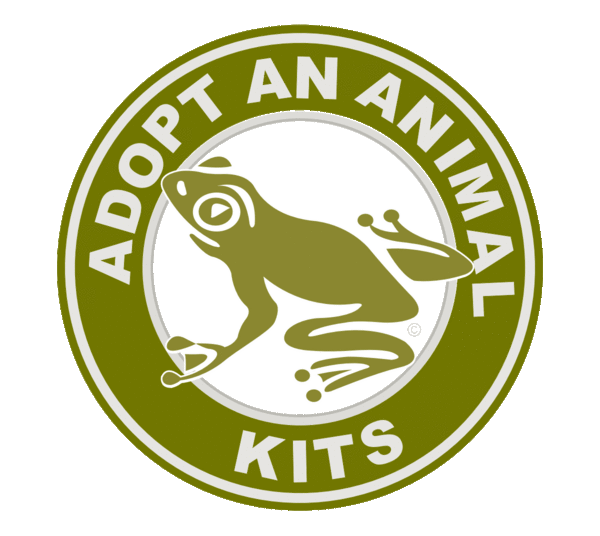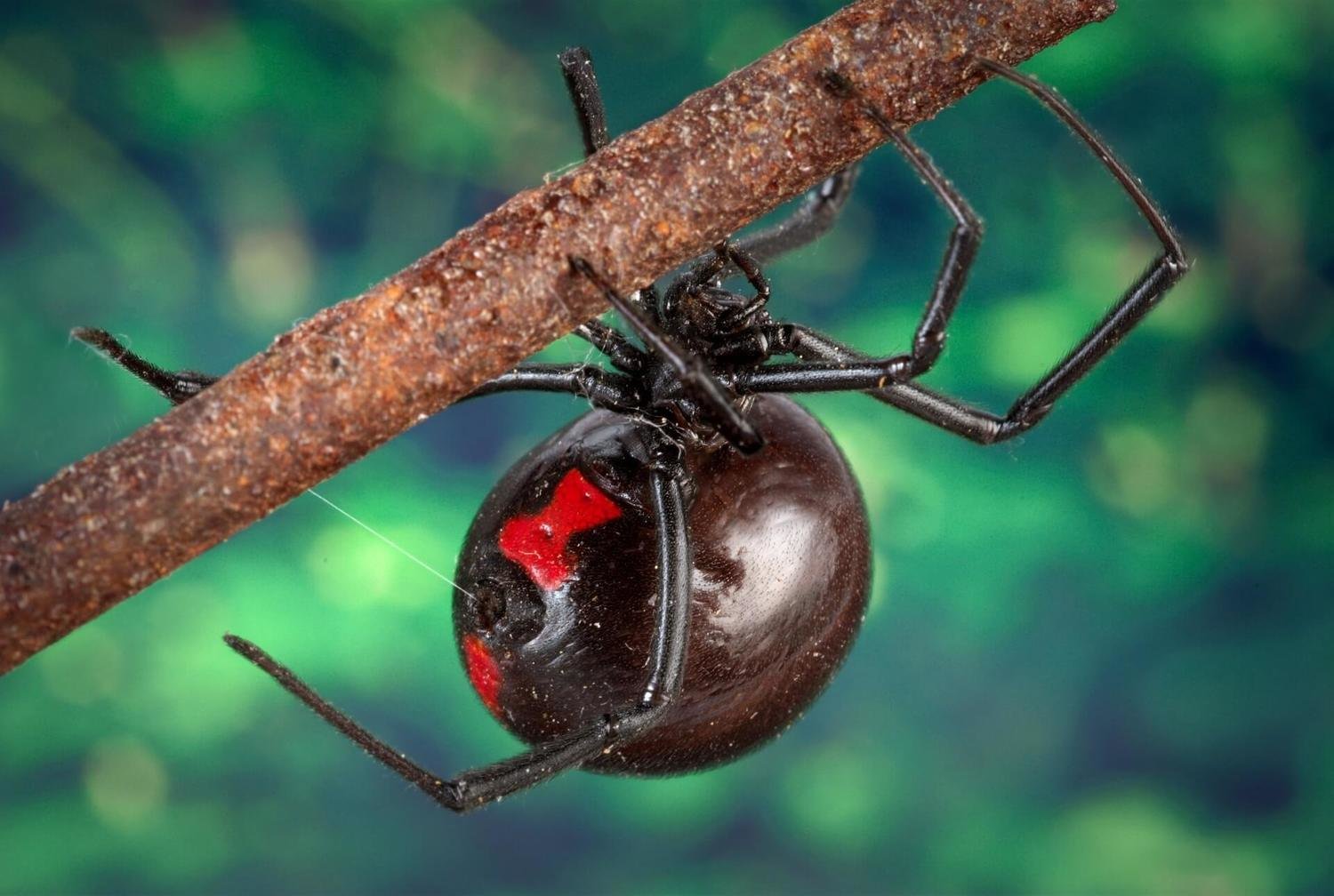

Adopt An Animal Kits
Adopt An Animal symbolically. Your Adopt An Animal Kit comes in a Deluxe Folder and includes: Glossy Photo of Your Adopted Animal; Adopt An Animal Adoption Certificate; Fact Sheet About Your Adopted Animal; Help Animals Info Cards Packed With Information On Animal Issues & How You Can Help Animals And The Environment. Adopt An Animal for Yourself or as a Gift.
Adopt A Spider
Adopt A Spider
Your Adopt A Spider Kit comes in a Deluxe Folder and includes:
- Glossy Photo Of Your Adopted Spider
- Adopt A Spider Adoption Certificate
- Fact Sheet About Your Adopted Spider
- Help Animals Info Cards Packed With Information On Animal Issues & How You Can Help Animals And The Environment
Adopt A Spider Kits make great gifts and can be sent directly to the recipient. Simply supply the recipient's name and mailing address as shipping information. We'll even include a letter stating the Adopt An Animal Kit is from you.
Adopt An Animal symbolic adoption is a one time fee. Adopt an animal for yourself or order an Adopt An Animal Kit as a gift. Help make a difference for animals - Adopt An Animal Today!
Adopt A Spider
Spiders are invertebrates but are not considered insects because they only have two main body parts instead of three, eight legs instead of six and no antennae. Most spiders also have eight simple eyes, while insects have large, compound eyes. Some have no eyes and others have as many as 12. Spiders, along with ticks, mites, harvestmen and scorpions, are called arachnida. They are also classified into a special group called araneae because they have very slender waists compared to other arachnida.
Spiders are found worldwide on every continent except for Antarctica, and have become established in nearly every habitat. Over 43,000 spider species have been recorded.
Most spiders are carnivorous, usually feeding on insects. Some are big enough to prey on larger animals such as mice or small birds. Without spiders, insect numbers would skyrocket and bugs would devour our crops. Most spiders eat about 2,000 insects a year.
Some spiders live in silk-lined burrows and leap out to capture prey. Some lie in ambush. Some go hunting in search of prey and others spin webs to entrap them. Some spiders capture prey with silk-made nets, and others use spider silk as "fishing lines". Spider silk is also used to protect their babies, to create shelters and to assist them as they move and reproduce. Some spiders even build "submarines" that hold air so they can stay under water. Most live on land, but a few live in and on water and can run across water.
Spider webs are made of continuous strands of spider silk produced from glands under their bellies. Most take about 60 minutes to construct. The webs have three parts: the frame, built first and attached to plants or other objects; the radii, which radiate out from the center like spokes of a bicycle and transmit vibrations from prey; and the catching spiral, the sticky threads that stretch without breaking making it difficult for insects to escape.
Small and young spiders can travel for miles on air breezes, a travel method called ballooning. To lure other spiders from their webs, the jumping spider plucks rhythms at the corner of a web to mimic a trapped insect.
Male spiders identify themselves by a variety of complex courtship rituals to avoid being eaten by the females. In web-weaving species precise patterns of vibrations in the web are a major part of the rituals. Patterns of touches on the female's body are important in spiders that hunt actively, and may "hypnotize" the female. Gestures and dances by the male are important for jumping spiders, which have excellent eyesight. Males of most species survive a few matings, limited mainly by their short life spans.
Females weave silk egg-cases, each of which may contain hundreds of eggs. Baby spiders pass all their larval stages inside the egg and hatch as spiderlings, very small and sexually immature but similar in shape to adults.
Females of many species care for their young, for example by carrying them around or by sharing food with them. Some spider mothers respond to the "begging" behavior of their young by giving them their prey, provided it is no longer struggling, or even regurgitate food. Like other arthropods, spiders have to molt to grow as their skin cannot stretch.
Some spider species are social, building communal webs that may house anywhere from a few to 50,000 individuals. Social behavior ranges from precarious toleration to co-operative hunting and food-sharing. Social predatory spiders need to defend their prey against thieves, and larger colonies are more successful in this. The herbivorous spider Bagheera kiplingi lives in small colonies which help to protect eggs and spiderlings. Even widow spiders, which are notoriously cannibalistic, have been known to form small colonies, sharing webs and feeding together.
Although spiders are generally regarded as predatory, some feed on plants and nectar. Various species are known to feed on dead arthropods (scavenging), web silk, and their own shed exoskeletons. Pollen caught in webs may also be eaten.
The best-known method of prey capture is by means of sticky webs. Varying placement of webs allows different species of spider to trap different insects in the same area. For example, flat horizontal webs trap insects that fly up from vegetation underneath while flat vertical webs trap insects in horizontal flight. Web-building spiders have poor vision, but are extremely sensitive to vibrations.
Some water spiders build underwater "diving bell" webs which they fill with air and use for digesting prey, molting, mating and raising offspring. They live almost entirely within the bells, darting out to catch prey animals that touch the bell or the threads that anchor it. A few spiders use the surfaces of lakes and ponds as "webs", detecting trapped insects by the vibrations that these cause while struggling.
Net-casting spiders weave only small webs but then manipulate them to trap prey. Some stretch their webs and then release them when prey strike them, but do not actively move their webs. Others weave smaller webs, hold them outstretched between their first two pairs of legs, and lunge and push the webs to trap prey. Some spiders emit chemicals that resemble the pheromones of other animals to attract prey.
Trapdoor spiders and many tarantulas are ambush predators that lurk in burrows, often closed by trapdoors and often surrounded by networks of silk threads that alert these spiders to the presence of prey. Other ambush predators do without such aids, including many crab spiders. A few species that prey on bees, who see ultraviolet, can adjust their ultraviolet reflectance to match the flowers in which they are lurking. Wolf spiders, jumping spiders, fishing spiders and some crab spiders capture prey by chasing it, and rely mainly on vision to locate prey. Some spider species mimic different ant species. They look like ants and modify their behavior to resemble that of the target species of ant.
Although most spiders live for, at most, two years, tarantulas and other mygalomorph spiders can live up to 25 years.
THREATS TO SPIDERS
Like most animals, the primary threat to spiders is the destruction of their habitat. Human development has taken an alarming toll on the environment. Impact from land use practices such as agricultural conversion, deforestation, and urban sprawl continue to degrade and fragment remaining pockets of habitat and accelerate biodiversity loss. Pesticides and other forms of pollution are also of serious concern, as well as genetically modified organisms (GMOs).
Spiders are also victims the pet trade, sold for a short life in captivity for human amusement. Captivity is cruel for wild animals. The physical and physiological needs of animals can never be met in captivity.
Adopt Adopt An Animal Kits
Our Adopt An Animal Kits are educational packets that allow you to symbolically adopt a favorite animal species and contain a variety of information promoting the protection of wildlife, companion animals, farm animals and the environment. By purchasing a symbolic adoption kit you will receive a packet of information regarding daily choices you can make to help the earth and animals.
Your Adopt An Animal Kit comes in a Deluxe Folder and includes:
Glossy Photo Of Your Adopted AnimalAdopt An Animal Adoption CertificateFact Sheet About Your Adopted AnimalHelp Animals Info Cards Packed With Information On Animal Issues & How You Can Help Animals And The Environment.
Adopt an animal for yourself or order an Adopt An Animal Kit as a gift. Symbolically adopting an animal is the perfect gift for a loved one who loves animals, and helps to promote the compassionate treatment of animals and respect for the environment by offering information on how to help the earth and animals. Adopt An Animal Kits can be sent directly to the recipient: simply supply the recipient's name and mailing address as shipping information. We'll even include a letter stating the Adopt An Animal Kit is from you.
Adopt An Animal Kits is a small, independent business not affiliated with any other business, non profit or charitable organization.
Fast Shipping!
Shipping time for Adopt An Animal Kits averages 2 to 4 business days - USA. Allow additional time for Adopt An Animal Kits orders outside the USA. Your Adopt An Animal Packet will arrive approximately 2 to 4 business days following shipping date. Shipping for Adopt An Animal Kits within the USA is by U.S.P.S. Priority Mail.
INTERNATIONAL ORDERS: Average shipping time for Adopt An Animal Kits outside of the USA is 5 to 14 business days, including Canada. International Shipping & Handling for Adopt An Animal Kits is by U.S.P.S. First Class Mail.
About Us

Adopt An Animal Kits, LLC
The world is teaming with an amazing diversity of animals. Some species are beautiful, others bizarre — but they all are important to the ecosystem and deserve our respect, compassion and protection. Unfortunately, many animal species are declining at a rapid rate as a result of irresponsible human activities. Habitat destruction, pollution, hunting, poor agricultural practices and changes in climate are among the threats faced by wildlife and domestic animals.
Adopt An Animal Kits, LLC is a small business who believes in promoting the advancement of compassionate living by educating the public about animal and environmental issues and what individuals can do to prevent cruelty to animals. Through our work, we strive to eliminate the prejudice of animals (speciesism) through educational efforts. Our business produces printed and printable educational materials available to individuals with an interest in earth and animal topics. Our Adopt An Animal Kits seek to educate and influence individuals on environmental and animal issues. The purchase of an Adopt An Animal Kit allows you to symbolically adopt your, or your loved one's, favorite animal species while promoting the protection of wildlife, companion animals, farm animals and the environment. Rather than adopting an indivdual animal, you are symbolicly adopting the species. Each kit contains a collection of information on how you or your loved one can make daily choices to help animals and the environment.
Our website provides an information portal regarding these issues. Information posted on the site is free of charge and available to anyone with an interest. Our printed and printable materials are available to individuals with an interest in earth and animal issues. We produce hundreds of fact sheets, flyers, and digital materials regarding environmental and animal issues. Most materials are available at no cost to anyone with an interest.
Adopt An Animal Kits, LLC is not a charitable or nonprofit organization.

